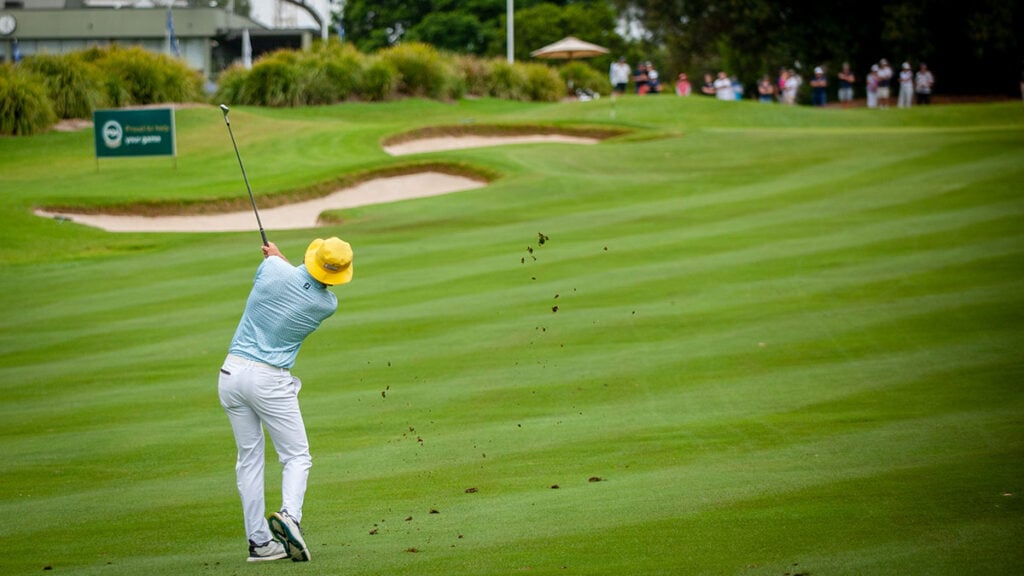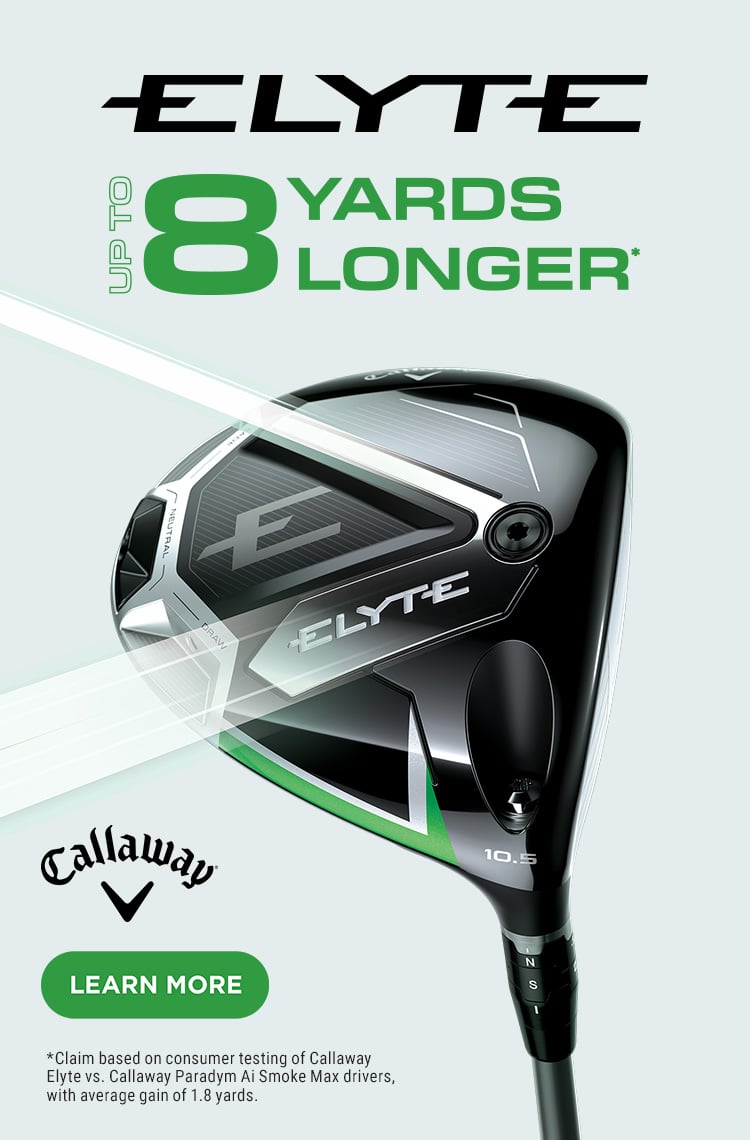[PHOTO: FreshSplash]
At some point in your life, you’ve probably locked your legs and bent over to see how close your fingertips can get to your feet. The toe-touch test has been a staple of fitness for many decades and is often used as a marker to evaluate a person’s overall health. If you think the goal is to touch your toes, however, you might be surprised to know that it’s not nearly as important as other aspects of the test in spotting dysfunction.
“I have a client that is 6-foot-8 but has a 6-foot-3 wingspan. He can’t touch his toes due to short arms,” says Lindsay Becker of Buckeye Performance Golf in Dublin, Ohio. Becker is one of Golf Digest‘s 50 Best Fitness Trainers in America. “I would argue that it’s less about someone touching their toes and more about assessing elements such as mobility of the hamstrings, lumbar spine and hip joints and – this one might surprise you – how stable your core is.”
That’s right. Struggling with the toe-touch move might signify weakness in your core muscles. If your hamstrings feel tight, it might not be a mobility issue. It might be because your hamstrings are doing the work of your core muscles as you bend over. Those muscles are meant to stabilise the body at address and during the golf swing. The hamstrings can’t be both mobile and stable at the same time, Becker says.
A simple way to check if this is your problem is to lie on your back and do a straight leg raise to at least 70 degrees (90 degrees would be if your legs were pointing straight up). “That is considered normal hamstring mobility,” Becker says. “So your lack of toe touch isn’t then due to actual hamstring tightness, it’s your core, which would necessitate different exercises to correct.”
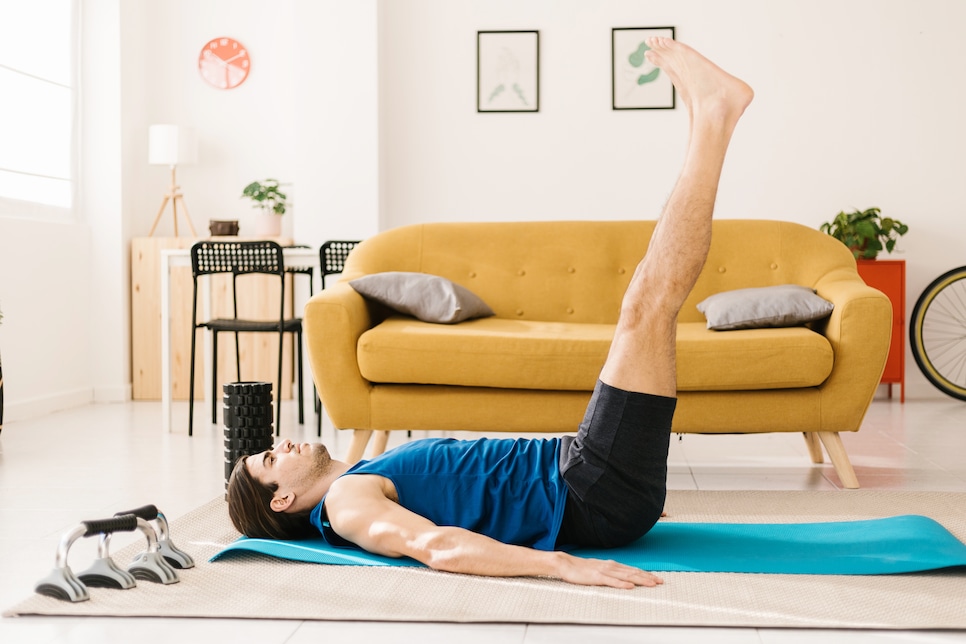
For golfers, a dysfunctional look to the movement down to the floor probably signifies several swing issues. If you tend to thin shots, find it hard to draw the ball, struggle in bunkers and also leave the range after a bucket of balls with low back or neck pain, it might be time to re-take the toe-touch test.
And setting aside golf performance for a moment, being able to bend forward from the hip joints in a healthy movement pattern is pretty valuable for activities of daily life, such as putting on shoes, retrieving things from the floor, etc.
“Being able to do it well makes back pain less likely,” says Dan Swinscoe, also one of Golf Digest‘s Best Fitness Trainers in America. Swinscoe trains golfers in the Scottsdale area of Arizona. “It also makes it easier to read putts, mark a ball, get golf shoes on and off and the clubs out of car. Also, if the person cannot maintain a golf posture during the swing, normalising the toe touch usually helps.”
Get it on video from all sides and start to look for these markers, says Paul Gozbekian, another of Golf Digest‘s Best Fitness Trainers in America. Gozkebian trains golfers in the Boston area at Fitness Performance Systems.
“I look for several things, but I want to see the head move down first, then any flat or extended areas in the spine,” he says. “I will focus on flat or extended areas. The spine should have a uniform curvature when flexing in a toe touch. If areas are flat, this can indicate areas of compression, lack of motion, expansion. This can limit hip flexion, shoulder flexion and obviously spine flexion, which not only will limit their golf swing but also reduce their capacity for movement with many exercises.”
Gozbekian recently evaluated one middle-aged golfer [below] who was able to come fairly close to touching his toes, “but, his sacral angle (base of the pelvis) was limited (less than 70 degrees), his lumbar spine was very flat and you could see his cervical spine in extension. When you do this test, the head should be down.”
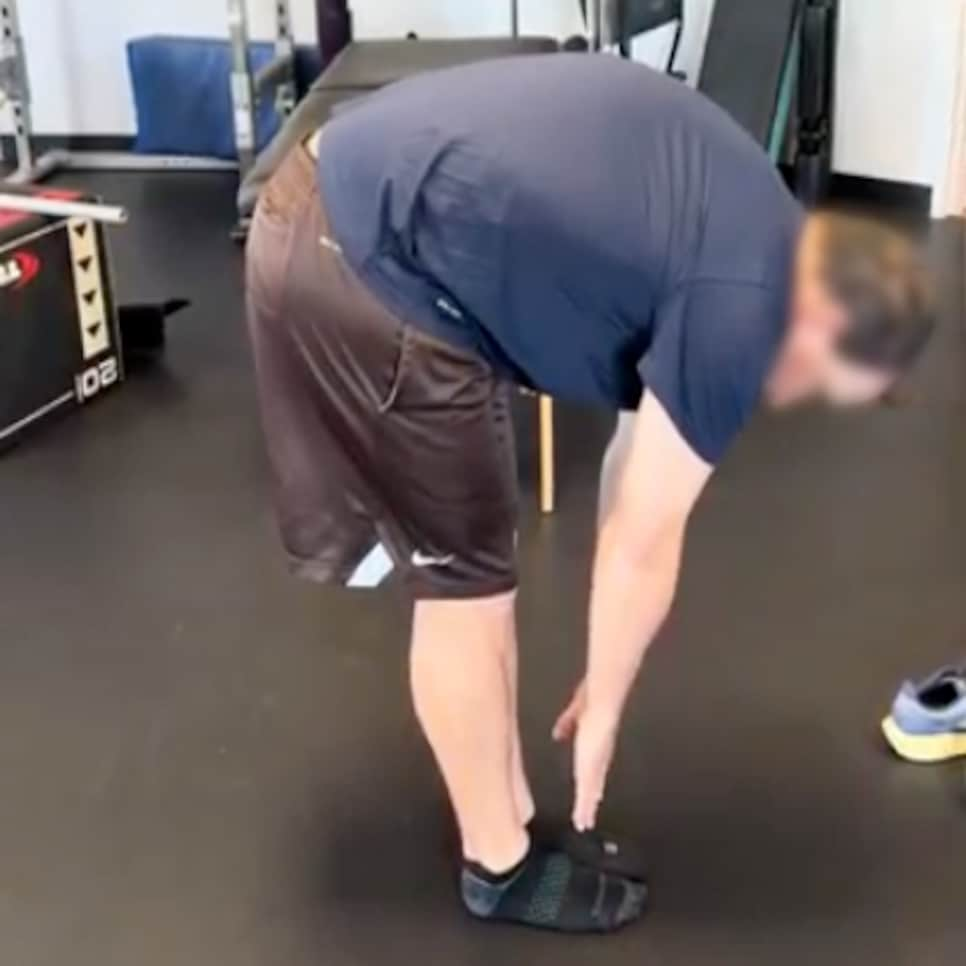
How would Gozbekian train someone who had this common look after the toe-touch test? “Depending on the rest of his assessment, I would probably focus on getting his lumbar spine to quiet down and decompress a bit. This should not only help with his toe touch, but open up his overall hip, spine and shoulder mobility.”
To recap, when doing the toe-touch test, it’s OK if you don’t actually touch your toes. Instead, when you review the move on video, check for the following:
1. While starting with and maintaining full knee extension, the head should move down first.
2. There should be a uniform curvature of the spine (no flat spots). Look at this skeleton.
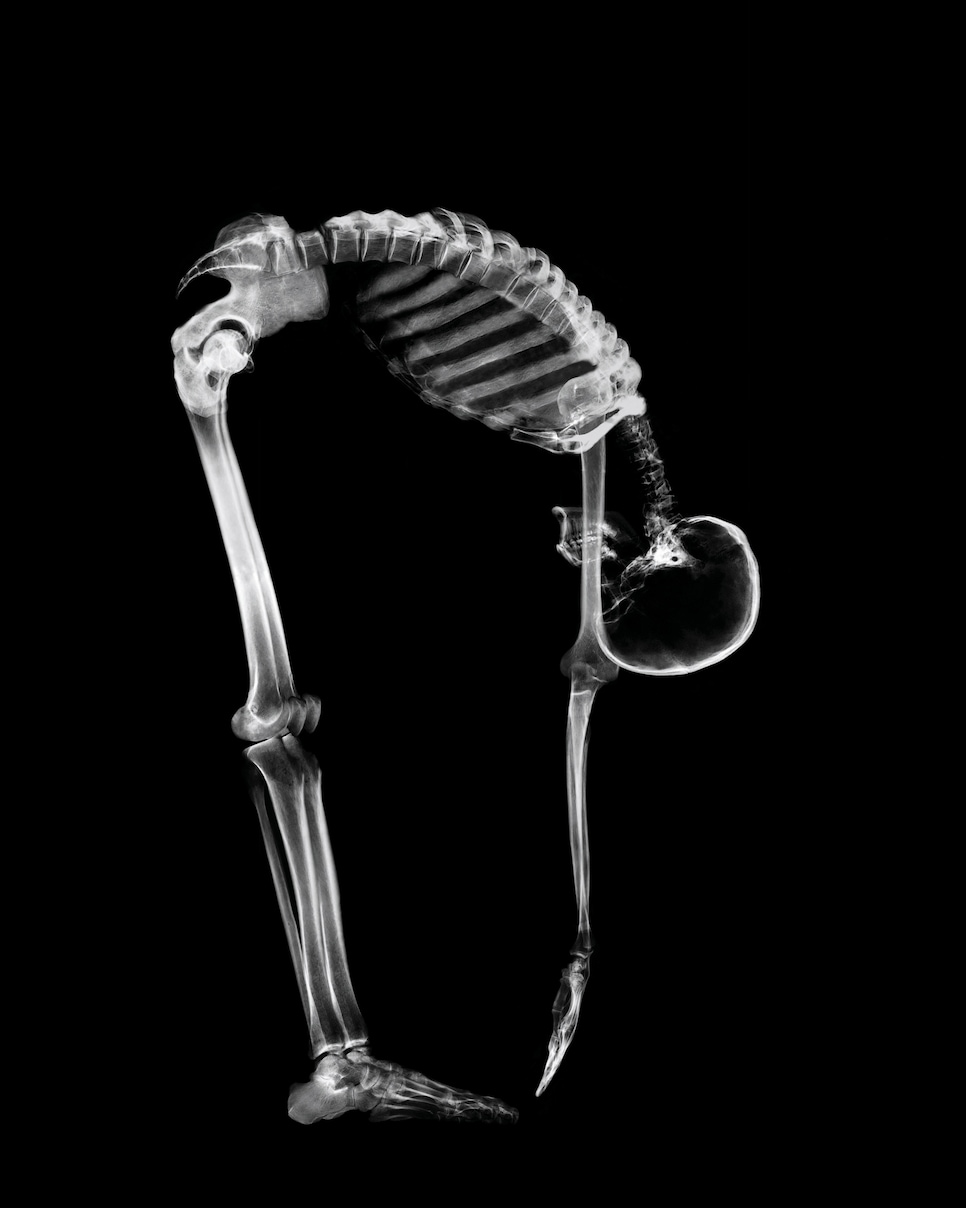
3. A weight shift backward supported by the posterior muscles.
4. The sacrum (the pelvic bone above the tailbone) should look very flexed (ideally 70 degrees or more of flexion).
5. No hump in the mid-back.
6. No rotation to one side or the other as the torso lowers.
Here are front and side views of the “proper” look (courtesy of Buckeye Performance Golf).
.jpg.rend.hgtvcom.966.1449.suffix/1739366873180.jpeg)
.jpg.rend.hgtvcom.966.1288.suffix/1739366872624.jpeg)
.jpg.rend.hgtvcom.966.1352.suffix/1739366872146.jpeg)
.jpg.rend.hgtvcom.966.1288.suffix/1739366871571.jpeg)
Depending on what you see, you might have identified a problem area that could be corrected with exercises. Generally speaking, exercises that emphasise hamstring flexibility, hip hinging, core strengthening and spinal decompression are going to help.



